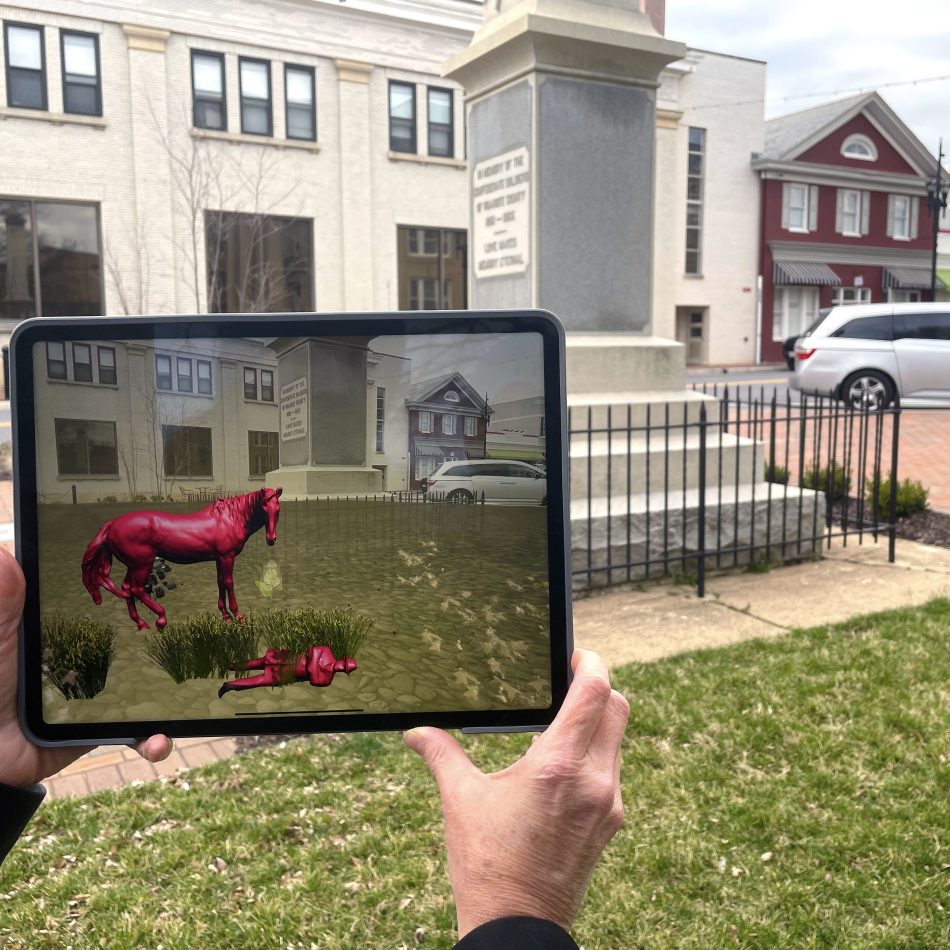
Monuments Dissected AR
Monuments Dissected AR (2020-ongoing) is a multi-platform documentary project centered around a growing collection of audio interviews about the past, present, and future of confederate and colonial monuments in the US.
The first platform for Monument Public Address System AR is a place-based augmented reality app accessible on participant’s smartphones or tablets. The second platform is an installation and musical performance, titled Monuments Dissected: Engaging Public Art and Contested Spaces. To learn more about the second platform, please visit this page.
In terms of the augmented reality app, when the participant turns on the app, they will discover 3D virtual objects that, when touched, trigger short sections of the interviews. As the interviews play, the participant can explore the 3D virtual animations that are superimposed on the physical world around them. The AR is made to be experienced at the sites of existing and recently removed confederate and colonial monuments yet, in order to make it as accessible as possible, it can be opened anywhere.
Drum is co-creating the AR app with research assistance from graduate student Bryce Burrell and technical assistance from undergraduate students in the School of Visual Arts at Virginia Tech.
Meredith Drum is the main artist driving Monument Public Address System; she is a white woman. Since the project interrogates the history of race in the United States, Drum will include information about how each participant self-identifies in terms of race and ethnicity. She recognizes that racial and ethnic categories are not neutral and are rather fraught with problems but she still thinks it is useful to bring the participants’ identities to the forefront as part of this project.
Drum has been conducting interviews for over a year in collaboration with her graduate assistant Bryce Burrell, who is a young Native American and Black artist. Drum and Burrell have spoken with a range of individuals who live across the US and work as community organizers, activists, educators, scholars, students, and artists. The interviewees have self-identify as Black, white, Asian, Korean-American, Cambodian-American, Italian-American, and mixed-race.
The sound of the interviewee’s voice as they tell their story is central to the project. Their narratives are rooted in their experience of the monuments in relation to racism as well as in their research and reflection on the role the monuments play within local, national, and international systems of oppression and injustice. Some of the interviewees have offered personal stories about their feelings of exclusion when they see images related to the confederacy and colonialism. Others have analyzed this symbolic violence of the monuments in relation to ongoing racist systems. And others describe potential liberatory sculptural works to fill the vacated public spaces in their cities.
Now that Drum has assembled a strong base of interviews, she is building visual art platforms in order to present the narratives to the public. Thus far these have taken shape as the AR app and the installation, as mentioned above.
Major funding for Monument Public Address System is being provided by Virginia Tech’s Institute for Creativity, Arts, and Technology in the form a Major and a Minor SEAD grant. The Center for Human and Computer Interaction also provided funding.
Below I have included a few images of the app in action as well as some animation stills from design prototypes that were made during the production of the AR app.





